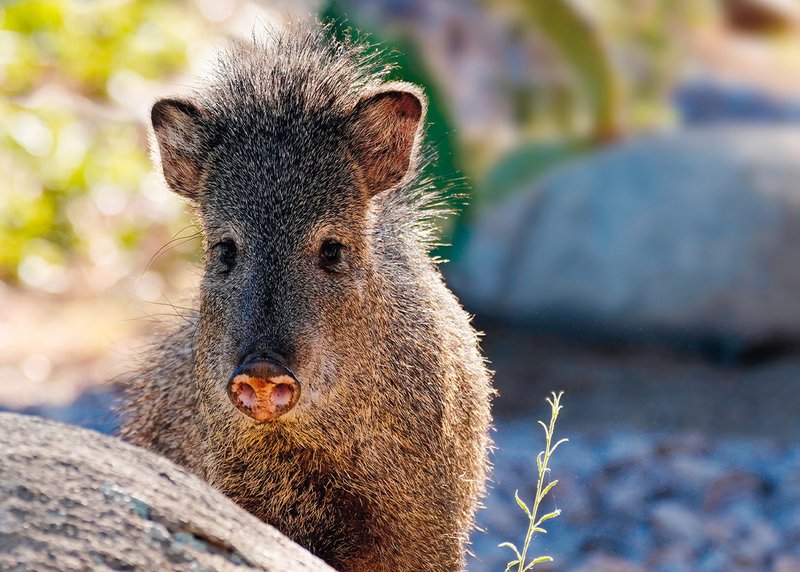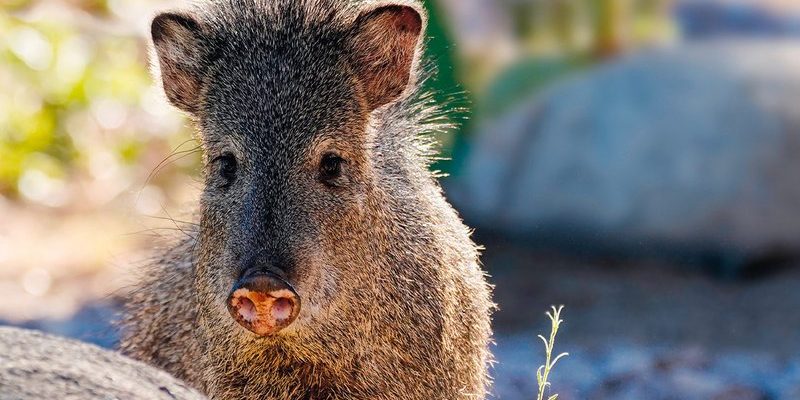
Understanding the cognitive abilities and behavior of javelinas can give us fascinating insights into their lives. It’s like peeling back the layers of an onion—you discover something new with every layer. Javelinas have their own quirks and skills that reveal a lot about how they survive in their natural habitat. Let me take you on a journey into the world of these intriguing animals.
Javelinas: An Overview
Before diving into their intelligence, let’s get to know the javelina a bit better. These animals, often called collared peccaries, stand about knee-high and have a stocky build covered in coarse, bristly fur. They’re social creatures, typically seen in groups, which can make them seem a bit more charming. You might even find them near hiking trails or in desert parks, foraging for food.
Javelinas are primarily herbivores, munching on a diet that includes roots, fruits, and even cacti. If you think about it, their social nature and varied diet are key elements that contribute to their survival. Just like a small family working together to get dinner on the table, javelinas collaborate in finding food while keeping each other safe from predators.
You might be wondering how they navigate their environment. Javelinas use their strong sense of smell to find food and detect danger. They rely on this acute sense, much like how we might listen for sounds or look for signs that tell us what’s around us.
Understanding Javelina Intelligence
When we talk about animal intelligence, it often includes problem-solving skills, memory, and social interactions. Javelinas display interesting forms of intelligence, especially when it comes to social behavior. They have complex social structures and communicate through a variety of sounds, body language, and scents.
Their ability to work in groups is quite impressive. Imagine a group of friends working together to accomplish a task—they share information and help each other out. Javelinas do this too! For instance, when one member squawks an alarm about a potential threat, others come together, ready for action. This teamwork is a vital part of their survival strategy.
Moreover, javelinas are adaptable creatures. They can thrive in diverse environments, from deserts to forests. This flexibility shows how well they can learn from their surroundings, which is a key marker of intelligence. Just as we might adjust our plans based on weather or traffic, javelinas adapt their foraging and social behavior to maximize their chances of survival.
Social Behavior and Communication
Javelinas are known for their strong social bonds. They often live in family groups called sounders, which can range from a few individuals to over a dozen. This social structure allows them to protect each other and find food more efficiently. Here’s where it gets interesting: their social interactions are not just about staying safe; they also involve learning.
Studies indicate that these animals learn from each other. For example, younger javelinas watch their elders to learn what foods are safe to eat and where to find them. This kind of learning mirrors how we often rely on family and friends to teach us life skills. So, you might say that javelinas pass down knowledge just like we do!
In terms of communication, javelinas use a mix of sounds, such as grunts and snorts, to convey messages like danger or food location. Their vocalizations are quite varied, and understanding these sounds is crucial for their social cohesion. It’s comparable to how we use tone and expression to convey emotions in conversations.
The Role of Memory in Javelina Life
Memory plays a significant role in a javelina’s daily life. They need to remember the locations of food sources, water, and their companions. Think about how you might remember the best grocery store or a friend’s house based on previous visits. Javelinas do something similar in their environments.
Research shows that javelinas can recall past experiences, which helps them avoid dangers and find resources. For instance, if a javelina encounters a predator in a specific area, it’s less likely to return to that spot. This ability to remember can mean the difference between life and death. In many ways, their memory serves as a survival guide.
Additionally, javelinas demonstrate spatial memory, which refers to their ability to navigate and remember the layout of their territory. They move through their homes like we might navigate a familiar neighborhood, relying on both memory and sensory cues. This spatial awareness is linked not only to finding food but also to establishing social bonds within their groups.
Problem-Solving Abilities
As javelinas scavenge for food, they often encounter obstacles. Their problem-solving skills come into play as they figure out how to access hard-to-reach food sources. For example, when faced with a prickly pear cactus, they might use their strong snouts to dig in or maneuver in a specific way to get to the tasty fruit inside.
You might liken this to watching a toddler try to reach a cookie jar. They might push a chair over or experiment with different angles to find a way to get what they want. Javelinas exhibit similar creativity when searching for snacks! This kind of adaptive behavior showcases their cognitive flexibility and ability to think outside the box.
Additionally, when faced with challenges, javelinas can work together, pooling their skills. For instance, if a group encounters a fence, they might strategize on how to navigate it—some might dig under while others jump or push their way through. This teamwork reflects their intelligence in overcoming obstacles in their environment.
Conservation and Human Interaction
Understanding javelinas’ intelligence has important implications for how we interact with them. As their habitats shrink due to urban development and climate change, recognizing their cognitive abilities helps us appreciate their role in our ecosystem. We can learn to coexist with these unique creatures rather than viewing them simply as pests.
For instance, javelinas are often seen rummaging through trash in suburban areas. Their cleverness at finding food can lead them to explore human spaces. By securing garbage and limiting attractants, we can reduce conflicts and enable these animals to thrive in their natural habitats. This is a win-win situation; we protect them while safeguarding our own environment.
Education about javelinas and their behavior can promote respect for wildlife. When people understand that these animals have complex social structures and intelligence, they’re more likely to appreciate them rather than fear them. It’s essential to foster a mindset of coexistence, where humans and javelinas can share the land harmoniously.
A Final Thought on Javelina Intelligence
So, how smart is a javelina? While they might not top the list of animal geniuses, their intelligence shines through their social behaviors, problem-solving skills, and adaptability. They teach us that intelligence comes in many forms, and understanding it can enrich our interactions with the natural world.
As you continue to explore the fascinating world of wildlife, take a moment to appreciate the complexity of creatures like javelinas. They may be small, but they play a big role in our ecosystem and have lessons to offer about teamwork, memory, and resilience. Next time you see a javelina, remember there’s a lot happening behind those curious eyes!

